China’s First Emperor and the Terracotta Warriors exhibition
China’s First Emperor and the Terracotta Warriors exhibition, in Liverpool – a review
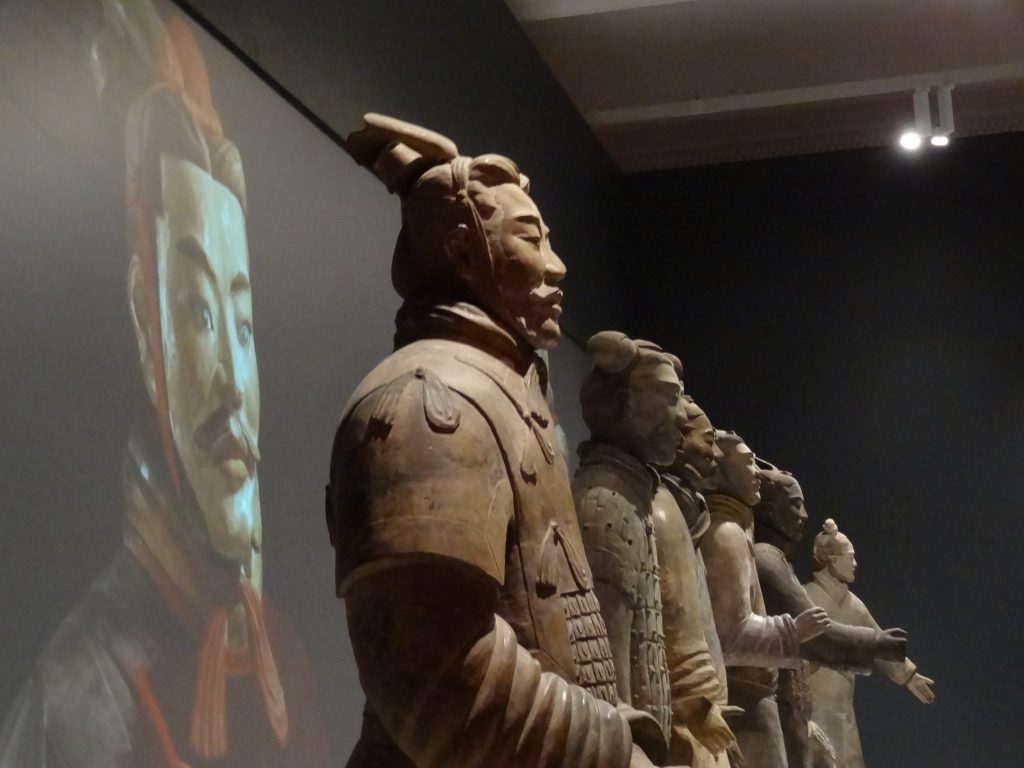
The 7 real terracotta warriors
I’ve wanted to see the Terracotta Warriors for years. Given my mobility issues, the dream of this was becoming more difficult.
Then I saw that it was coming to Liverpool and I knew I had to work out how see it, what ever happened. I did a bit of research of travel, walking distances, hotels, other things to see in the city and booked my ticket.
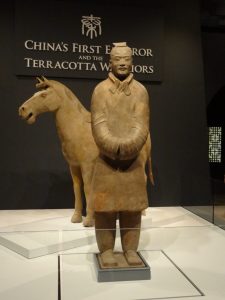
Terracotta Warrior and horse
The exhibition organiser
In May I attended the Museums and Heritage show. Guess who happened to be speaking. Fiona Philpot from the National Museum Liverpool, the lady who had actually organised the exhibition.
According to Fiona, Liverpool was chosen to host the exhibition due to it’s large Chinese population. She and her lead designer visited China to research the culture, design, history and other aspects, that would provide inspiration for the exhibition.
The design
At the entrance to the exhibition, on the ground floor of the Museum, stand 2 colourful replica warriors. Red chinese lanterns line your way to the main doors.

One of the exhibition panel designs at the terracotta warriors exhibition
The introductory video isn’t shown on a plain video wall, but a multi faceted, projection. Different clips of film are projected on each projection, creating a kaleidoscope effect.
The first exhibit is a fabulous warrior and his horse. It is free standing so you’re able to see all the way round and is a great introduction.
The exhibition walls slope upwards to reflect the walls of the tomb that the warriors. The top of the display cases have ornate wood fret work and are backed by red. The inspiration for this apparently came from a restaurant that Fiona and her designer visited in China. To reflect China’s importance in introducing silk, huge silk banners drop from the ceiling. Each tells a different aspect the story of the Emperor, how he unified China and the warriors.
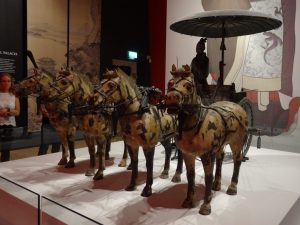
A half size replica charioteer and horses at the terracotta warriors exhibition
China only allowed 7 of the actual warriors to leave the country. Each warrior represents a different type of warrior. An infantry man, a General, a charioteer and so on. A video is projected behind them. This gives the idea that there were more warriors with them in a tomb,
There is a half size replica of a chariot and 4 horses. These are also free standing, which allows viewers to see them from all angles.
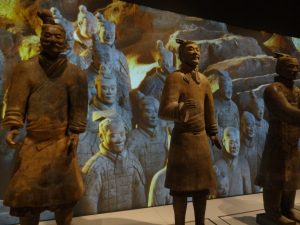
Some of the real terracotta warriors
Around the sides of the exhibition are other panels and artefacts telling the story of Qin Shi Huang who died in 210 B.C. He conquered 6 neighbouring states to become the First Emperor. His tomb is still unopened, even though his warriors are still being excavated and the last display in the exhibition creates an animated idea of what the inside of his tomb might look like.
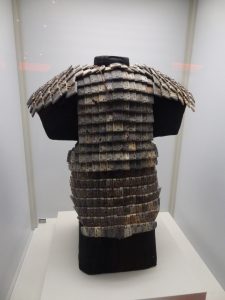
A stone suit of armour at the terracotta warriors exhibition
Conclusion
Luckily I knew beforehand that there would only be 7 real warriors in the exhibition. I heard other people saying how they had expected more and were disappointed. May be a notice outside would manage visitor expectations more effectively. If I had travelled all the way to Liverpool from London, not knowing there were only 7 warriors, I would have been extremely disappointed.
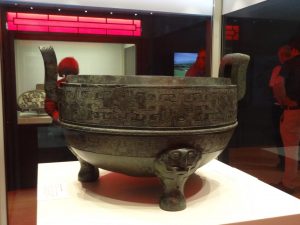
A giant bowl at the terracotta warriors exhibition
Another negative, for me. There was very little about how the warriors themselves were made. Or how they were painted. The only time your see a painted warrior, is at the main entrance to the exhibition. Or briefly in the video behind the warriors.

Three of the terracotta warriors
There are several programmes about the warriors and how they are made. Each warrior is different. Artisan craftsmen made them. There is a possibility the craftsmen may have been influenced by European craftsmen. There was nothing about this. I love crafts and seeing how things are made, especially historical artefacts. This was disappointing. To me that seems as though it should be an key part of the exhibition.
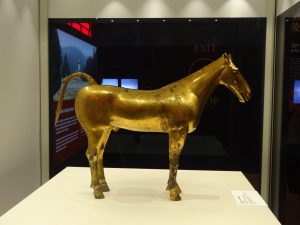
A gold horse at the terracotta warriors exhibition
On a positive note, the flow of the exhibition seemed good, except of course, in front of the real warriors. You can move round freely and see most of the exhibits easily. Accessibility is good and the staff are very helpful. To be able to see all those wonderful artefacts, close to is great. To be almost eye to eye with a warrior was an amazing feeling.

One thought on “China’s First Emperor and the Terracotta Warriors exhibition”
Comments are closed.